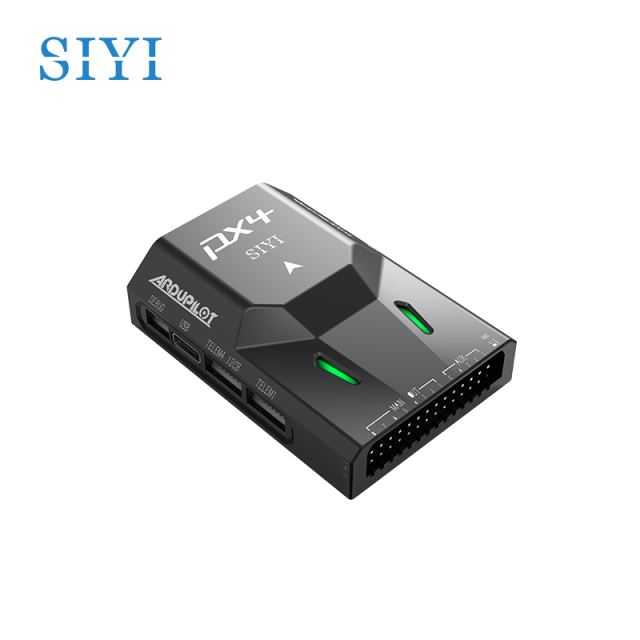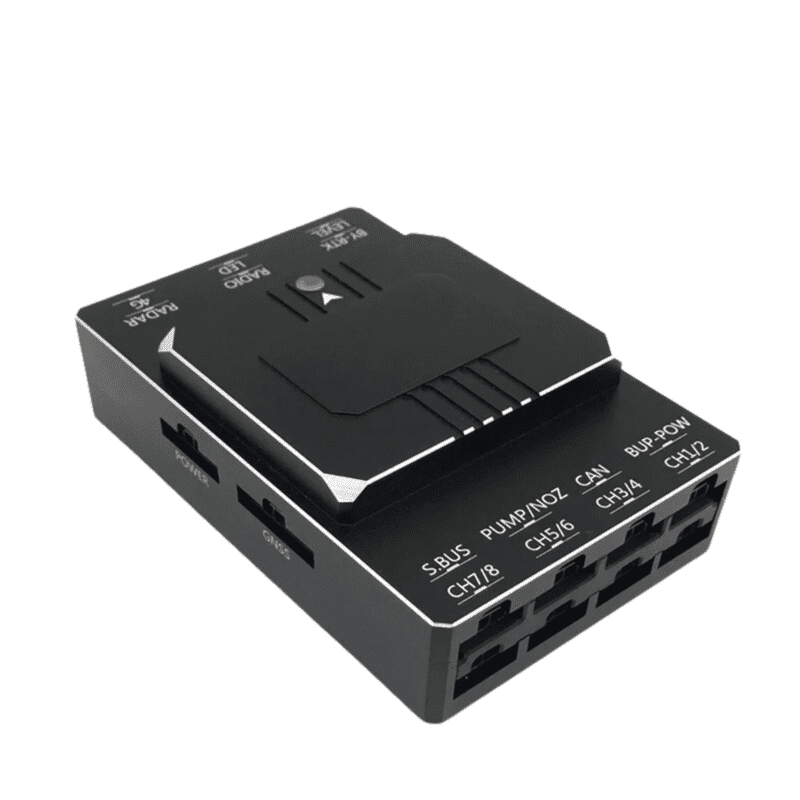SparkNavi Drone Flight Controller and GNSS/INS Made in Taiwan: Blazing A Trail in Drone Technology
SparkNavi Drone Flight Controller and GNSS/INS Made in Taiwan: Blazing A Trail in Drone Technology
Blog Article
Exploring the Role of Drone Flight Controllers in Enhancing Flight Security and Navigation Efficiency
The development of drone modern technology has actually dramatically increased the relevance of flight controllers, which serve as the brain of these airborne automobiles. By integrating real-time information from an array of sensors, trip controllers boost trip stability and navigation performance, making sure that drones can operate smoothly also in intricate settings.

Understanding Trip Controllers
Flight controllers are integral parts in the performance of drones, functioning as the brains that stabilize and take care of flight operations. These sophisticated devices procedure information from numerous sensors, including accelerometers, gyroscopes, and GPS, to make sure that the drone preserves its desired flight path. The trip controller translates this data and executes commands based on pre-defined formulas, allowing the drone to reply to environmental modifications, such as wind or barriers.
The primary function of a flight controller is to maintain security during flight. It attains this by making real-time adjustments to the drone's electric motors and control surfaces, ensuring equilibrium and control. Additionally, contemporary trip controllers incorporate innovative functions such as waypoint navigation, allowing for automated flight paths and enhanced operational performance.
Understanding the style of flight controllers is vital for both specialists and enthusiasts. They typically contain a microcontroller, firmware, and numerous interfaces for sensing unit input and communication. As technology advances, trip controllers have become a lot more qualified and compact, incorporating expert system to adjust and improve decision-making procedures to intricate flight scenarios. This advancement signifies a critical growth in the drone industry, leading the way for extra sophisticated applications and much safer procedures.
Key Parts of Flight Security
Achieving optimum flight stability in drones depends on numerous key elements that function in performance to make certain smooth and controlled operations. Central to this stability is the flight controller itself, which processes data from various sensors to preserve the wanted trip mindset. This consists of accelerometers and gyroscopes that determine motion and orientation, enabling for real-time adjustments to the drone's setting.
One more essential element is the electronic speed controllers (ESCs), which regulate the power supplied to the electric motors. By finely tuning electric motor rates in action to trip controller commands, ESCs assist keep balance and counteract disruptions triggered by wind or sudden activities.
In addition, the design of the drone's framework plays a pivotal duty in flight stability. A well-structured structure decreases vibrations and enhances the overall wind resistant account, contributing to smoother flight features. The integration of advanced formulas within the flight controller aids in anticipating modifications, guaranteeing a versatile and responsive flight experience.
With each other, these components form a cohesive system that enhances a drone's security, enabling exact handling and boosted performance in various flight conditions.
Navigation Efficiency Methods
Effectiveness in navigation is important for enhancing drone operations, especially in complex environments. Efficient navigating strategies boost the capability of drones to go across tough terrains and prevent challenges, therefore enhancing functional effectiveness and safety and security.
One noticeable strategy is the execution of sophisticated general practitioners and inertial dimension systems (IMUs) that give specific area tracking and alignment data. These innovations allow drones to calculate optimal trip paths in real-time, thinking about various factors such as wind conditions and prospective obstacles.
One more method entails making use of formulas for course preparation and optimization. Formulas such as A * and Dijkstra's formula can be deployed to identify one of the most effective route while minimizing power consumption and trip time. Furthermore, integrating artificial intelligence models can allow drones to adaptively gain from their environments, improving navigation capabilities through experience.

Effect on Autonomous Drones
The combination of sophisticated navigating techniques has actually greatly changed the capacities of independent drones, enabling them to run with higher freedom and accuracy. SparkNavi drone flight controller and try this website GNSS/INS made in taiwan. These enhancements are mainly credited to innovative trip controllers that make use of real-time data processing and sensing unit combination, allowing drones to browse complicated environments flawlessly
The effect on independent drones prolongs past simple navigating; it includes enhanced barrier avoidance, boosted stability throughout dynamic problems, and enhanced goal integrity. By leveraging algorithms that integrate device understanding and expert system, drones can adjust to altering circumstances, making educated choices that enhance their trip paths while minimizing dangers.
Furthermore, the implementation of durable trip controllers has actually facilitated the implementation of complicated tasks, such as airborne evaluations, distribution solutions, and agricultural tracking, with minimal human intervention. This ability not just improves procedures however additionally decreases human mistake, thus boosting overall security.
As an outcome, the operational range of autonomous drones has increased considerably, making them indispensable tools in numerous industries. Their capability to execute efficiently in varied situations emphasizes the crucial function that progressed trip controllers play fit the future of unmanned aerial systems.
Future Patterns in Trip Control
Regularly, developments in trip control technology are poised to redefine the landscape of drone procedures in the coming years. Arising patterns show a significant change in the direction of boosted man-made intelligence (AI) combination, allowing flight controllers to process real-time data more effectively. This development will certainly promote better decision-making capabilities, enabling drones to adapt to dynamic ecological problems autonomously.
In addition, the implementation of artificial intelligence algorithms is anticipated to improve anticipating maintenance, consequently decreasing downtime and expanding the lifecycle of drone parts. This aggressive approach to upkeep will certainly be vital as drone applications broaden throughout different markets, from agriculture to logistics.

.jpg)
Lastly, developments in protected communication procedures will deal with safety you can try this out and regulatory worries, making sure that drones can run flawlessly in stuffed airspaces (SparkNavi drone flight controller and GNSS/INS made in taiwan). Jointly, these fads aim in the direction of a future where flight control systems are not only smarter and much more additionally qualified however effective of operating safely in a significantly incorporated airspace
Final Thought
In conclusion, drone flight controllers are integral to boosting flight security and navigation performance with the innovative handling of sensing unit data. By maintaining optimum trip attitudes and utilizing innovative formulas for course optimization and obstacle avoidance, these controllers substantially add to the freedom and functional safety of drones. As technology continues to progress, better innovations in flight control systems are expected, assuring better performance and broadened abilities in the world of unmanned airborne vehicles.
By integrating real-time data from a variety of sensing browse around these guys units, trip controllers enhance flight stability and navigation effectiveness, making certain that drones can run smoothly even in complex environments.Flight controllers are important parts in the performance of drones, offering as the minds that stabilize and manage flight operations. Additionally, modern flight controllers incorporate sophisticated functions such as waypoint navigation, enabling for automated flight paths and boosted operational performance.
Central to this security is the trip controller itself, which processes information from different sensing units to keep the wanted flight attitude.In verdict, drone trip controllers are essential to enhancing trip stability and navigation performance with the sophisticated processing of sensor information.
Report this page